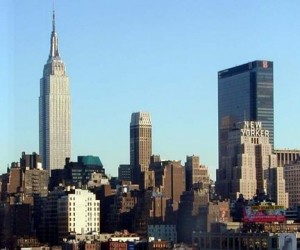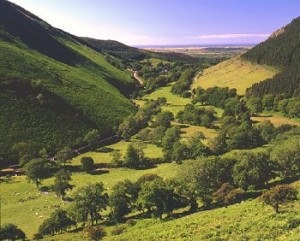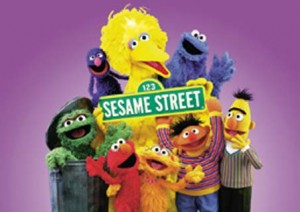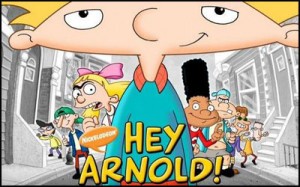Did You Hear About the Morgans? flopped across all three levels: commercially ($29 million domestic gross vs. a $58 million budget), critically (Metacritic: 27), and socially (Rotten Tomatoes: 13). Of the many things wrong with the film, it seems to be yet another work that espouses the evil, uncaring, cold, urban environment for the beauty, serene, and heartfelt warmth that can only be taken from the most rural of areas. City-folk can’t learn about real values in the hustle and bustle of that big, loud place with the skyscrapers and the traffic and the bums. No: you need to come out here, with the fresh air, the lack of civilization, and little cell phone service, where you’re freed from that boisterous nonsense and given the chance to understand you, your life and your significant other.
“Bullshit,” you say. “Why can’t films take the opposite approach? Why can’t characters move to the city and learn something about life values, movies such as –”
…
Wait. Has there ever even been a movie that done this? Has there been a film or TV show or comic or SOME entertainment medium that allowed the wonder and richness and excitement of the city to spur a character from the negative, overworked, self-centered mindset to the communal, wholesome, respectful one? (Farm-living isn’t exactly a cakewalk.) Can we learn value from the urban landscape? Has there been anyone willing to try?
Off the top of my head, only two films seem to touch partially upon the idea: Manhattan and Lost in Translation. Manhattan I have yet to see, but Woody Allen’s opus to New York is just simply that: it idolizes that specific city. It ignores cities in general, nor does it advocate the kind of generic values that rural areas seem to just impart in spades (see Annie Hall, in which its anti-LA sentiments are pretty glaring). Lost in Translation is closer, but it is not the city of Tokyo and its active culture through which Bill Murray has his transformation. His human revelations are brought about via his time with Scarlett Johansson, and he doesn’t learn about “values” so much as himself. It’s a character study, a fairly good one, but Tokyo, the city, is still inherently a backdrop of excess, noted by the earlier scenes of his longing gazes at the huge towers and bright lights. He didn’t go to Tokyo and, by extension, learn wholesome, gosh-darn-it lessons.
It’s easy to see why this trope-bordering-on-cliche is so prevalent in films today. From a technical and visual level, the city imparts a sense of lack of control, a frustrating milieu of frantic action that can’t adequately define or reflect the feeling of love, family, community, or friendship. What is the value of a kiss or a hug or a handshake, when horns and siren blare incessantly in background, across stone-cold swaths of grays? Any potential meaning there is rendered moot.
Surburbia used to be a breeding ground for such moral considerations, but since then, the 50s have been exposed as a hotbed of barely-hidden racism and sexism (see Mad Men), and dysfunction within the suburban family has been overly represented in films like Ed Wood, American Beauty, and The Weather Man. We could return to that locale to exercise clean and ethical living, but it would appear more like pastiche then genuine representation (see Blue Velvet).
This leaves rural America, with its wide open spaces and natural beauty, to be the venue in which such virtuous sensations arise. And while films have been produced that showcases the negative of expanse and freedom (Sling Blade, practically every horror movie ever), comedies, dramas, and even “dramedies” often pull their characters to these country scenarios to meditate on their state of mind, only to emerge a changed man or woman.
It would take a brave and visionary filmmaker to pool the right types of talents together to make a movie where the urban environment could be as rich and rewarding a place as a rural one. But it would be hard to do so. And expensive.
In retrospect, I can only think of two forms of entertainment that seem to suggest that the sprawling metropolis and the underlying streets have value, not only in the rich expanses of awe-inspiring architecture, but even in the meager conditions of street life, an area so often depicted with grim and filth, gangs and pimps, drugs and danger.
Oddly enough, they are children shows.
Sesame Street’s main formula — mildly straightforward and simple stories mixed with cartoons, skits, and segues about letters and numbers — has an underlying richness within itself, with characters that do indeed live and care and are generally helpful to each other. These are attitudes that are so often depicted in close-knit rural towns, where everyone knows everyone, so it’s great to finally see it in an area that could be Brooklyn or South Central LA. In my experience, the city is a lot more receptive to newcomers than the rural areas. The city is a constant hotbed of people coming and going, where strangers are a daily occurrence. Rural areas, while not outright distrustful, seem so keen on conforming the newcomer to their way of life — which of course, is undeniably right — than generally accepting the strangers’ ways of doing things. Just watch how Sesame Street deals with new puppets or locals. The introduction of Linda Bove, who brought the issue of deafness and sign language to the show, hosts ten times the significance than any camera shot of a quiet brook among trees.
Hey Arnold came, had a good run, and went; I personally think we missed a real opportunity by not adequately discussing the value of the urban youth this show quite accurately presented. While the main character, Arnold, was rather smaltzy for any child to be, the overall feel for the show was endearing. These were not the bratty, annoyingly precocious children that so often grace our Sleepless in Seattle’s and Jerry Maguire’s. These were real kids with real emotion issues, who struggled in schools named by number only, who played stickball and fooled around in the mud, who learned about themselves and their lot, not by escaping the urban landscape but by embracing it. When a character takes a city bus – public transportation! – and learns about the value of the people around her, that’s something real.
Neither of these shows contained a character from the country moving to the city and gaining a wholesome rebirth of the spirit (although I do think an episode of Hey Arnold did cover that). But what this does showcase is that places like New York, Los Angeles, Cleveland, Dallas, and, yes, even Detroit, can be rich with those moral instructions on life, love, and community that seem only regulated to areas that pits five miles of land between neighbors.
I don’t mean to harp on the rural communities, but films really need to start embracing the urban sprawl as containing those “values” that seem natural to rural or the occasional suburban world. Surely we can’t allow for PBS and Nickelodeon to be the only place that allow for such a viewpoint, one that uses the light-hearted, socially-interpreted media of puppetry and animation to appeal to kids, focusing on the values less as an artistic and narrative endeavor and more of a method to “educate” children. I would like the Jacksons, Roths, Tarantinos, Reitmans, and the many other directors, writers, and producers to look at the hustle and bustle of the asphalt jungle and, perhaps, find its own flow, its own community, its own wonder that can be passed along to audiences.




Comments are closed